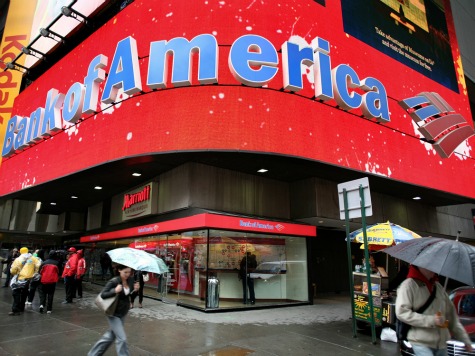
A lawyer once told me that “all’s well that ends” when it comes to litigation. As we enter year six of the investor litigation by American International Group, several Federal Home Loan Banks, and other large investors against Bank America’s Countrywide unit, the story just keeps getting better and better.
In a stunning revelation this week in NY State Supreme Court, attorney Kathy Patrick of Gibbs & Bruns revealed that “the Office of the Comptroller of the Currency gave Bank of America clearance to put Countrywide into bankruptcy if Countrywide’s liabilities threatened BofA’s existence,” reports Alison Frankel of the Reuters News and Insight service.
Her clients were told by BofA Chief Risk Officer Terry Laughlin in 2011 as they tried to come to terms on a settlement of investor claims that Countrywide breached representations and warranties about the underlying mortgage loans. To my knowledge, Patrick’s assertion – which was intended to support her argument that MBS investors risked getting much less than $8.5 billion for their put-back claims – is, if true, the first tangible indication that Bank of America ever did more than hypothesize bankruptcy for Countrywide.
In 2011, I wrote for Reuters about the possibility of using voluntary bankruptcy for all of Bank America, a la GM, to bring an end to the torment, “Is Bank America Preparing for Bankruptcy.”
Turns out that Bank America was in as dire condition as I claimed: “I don’t have any access to inside skinny, but what I see suggests to this investment banker that a restructuring may impend at Bank of America. In the event, that is good news in a sense that this continuing distraction to the financial markets will be headed for a final resolution.” Indeed, that was my last article for Reuters. I wonder why.
Earlier in 2011, I wrote “Uncertainty and indecision threaten Bank America and global markets”:
For the past several years, my firm has been arguing that restructuring is the only way to solve the problems facing the largest US banks — the top four institutions that exercise a de facto cartel over the US housing market. After years of earning what seemed to be supra normal returns from the “gain on sale” world of US mortgage originations, the large service banks are now drowning in the same sea of risk that once made them seem so profitable.
Suggestions to restructure zombie banks like Bank America are ridiculed by former Treasury Secretary and Robert Rubin minion Tim Geithner and his ilk because of supposed “systemic risk,” but such arguments reek of corruption. The real reason nobody wanted bankruptcy for Bank America’s Countrywide unit was because of the securities fraud that would be revealed by a thorough examination of the mortgage backed securities originated by Countrywide and other lenders. Geithner’s successor at Treasury, Jack Lew, is another Rubin minion who was parked at Citigroup during the bad old days under Sandy Weill.
Just go down the list of the top six universal banks in the US; all have some degree of exposure to old mortgage backed bonds that, for example, had multiple pledges of collateral. That is, a home mortgage might have been pledged as security on two or more different bond deals. This is why neither Geithner nor his nominal boss, Barack Obama, would not dare prosecute any of the heads of the largest commercial banks for securities fraud; for fear of what they would find inside Pandora’s Wall Street drop box.
Remember when John McCain (R-AZ) said he was going to go through the bad subprime loans “one at a time?” That was the end of the McCain presidency as far as Wall Street was concerned.
For years now, Obama, Geithner, New York State Governor Andrew Cuomo, and NY Attorney General Eric Schniederman have artfully done nothing to bring the real culprits behind the subprime crisis to justice. Thanks to professionals like Reuters’ Frankel, the Bank America Countrywide civil trial gives us some insights into the larger mess behind the scenes, inside hundreds of mortgage backed securities trusts that have nobody representing their interests. It’s not just consumers who were wronged in the housing bubble, but individual investors, union pension funds, and federally insured banks.
Both Uncle Sam and private investors bear the cost of the systematic malfeasance that was involved with some of the largest banks during the subprime boom. Jamie Dimon at JP Morgan, to take another example, faces similar issues with his Bear Stearns unit. And we’ll be reading about this mess it seems for years to come. But don’t hold your breath waiting for anybody in Washington or Albany, of either party, to bring the true intellectual authors of the subprime mess to justice.
Like the lawyer said, “all’s well that ends.”

COMMENTS
Please let us know if you're having issues with commenting.